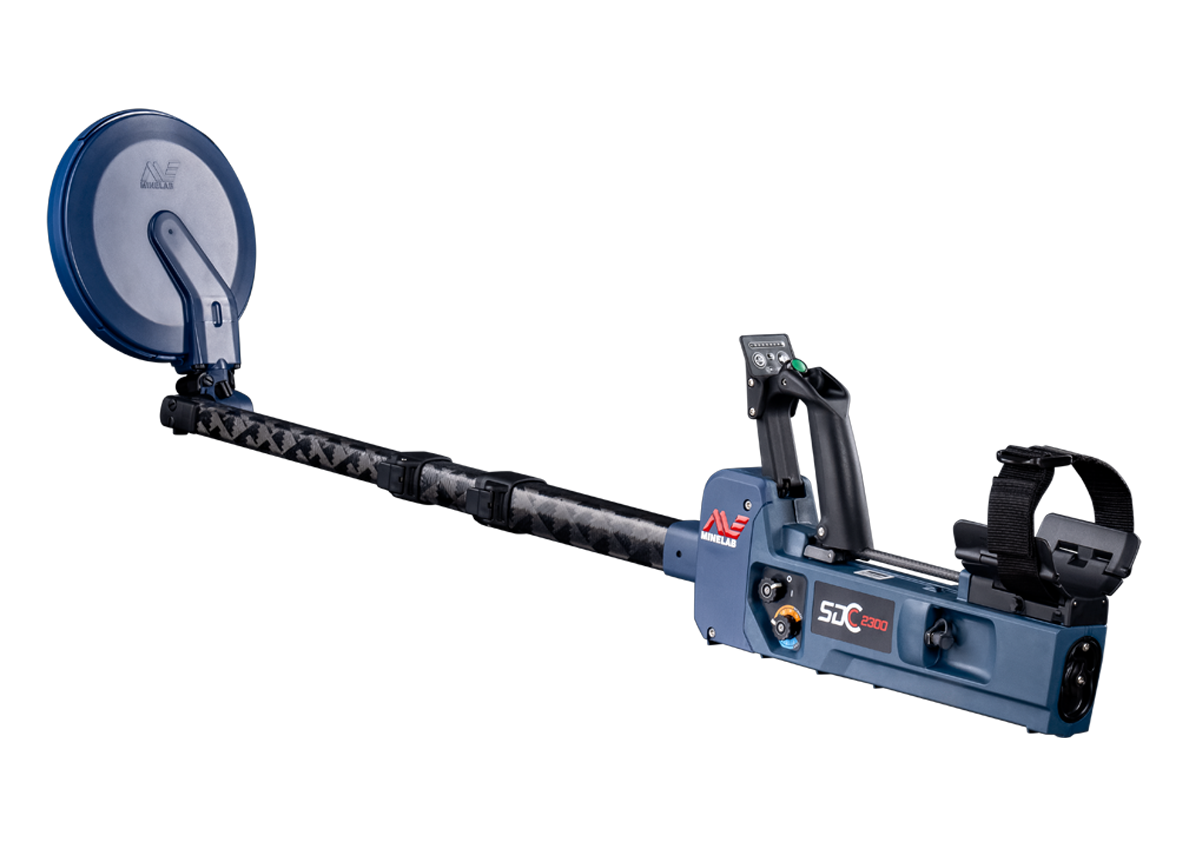The Minelab SDC 2300 is a remarkable metal detector, and more people are finally realizing it. The SDC 2300 has exceptional sensitivity to very small gold and even larger gold that other pulse induction detectors have difficulty with. Porous specimen gold is being found that is surprisingly large in mass but which due to the spongy nature of the gold has been missed by other detectors.
The SDC 2300 small gold capability rivals the best VLF detectors and exceeds their capability in highly mineralized ground. It is useful therefore to steal a page from the VLF playbook when it comes to detecting for small gold. The very first thing many people will find that have used other pulse induction detectors is that a nugget cup or scoop is a genuinely useful thing to have when running and SDC 2300. Some of the gold found is so small that is cannot be detected by grabbing a handful of soil and waving it over the coil.
The tiniest stuff is often found by scrubbing the ground and the smallest gold signals come from gold that is nearly touching the coil. Simply holding the soil in your hand keeps the gold too far from the coil to locate it. A plastic cup or stout plastic scoop allows you to shake the material to get it right to the bottom of the scoop, which can then be run over the coil. I let the scoop touch the top of the coil to get the gold as close as possible, and it helps to locate the hot spots around the edge of the coil when dealing with the tiniest bits.

It is this ability to hit very tiny gold but only at very short ranges that I want to discuss here. There are huge volumes of gold that can be detected by the SDC 2300 but at only a few inches at best. This means the SDC 2300 can be used to effectively work dry placer deposits of gold by carefully scraping and detecting them.
Before I go any further I want to point out that the method I am about to describe can mean moving large volumes of soil. Even working by hand the cumulative effect can be large and falls into the realm of regulated mining methods. In the United States the term used is “significant surface disturbance” and no doubt similar issues arise in Australia and elsewhere. All I can say is be sure to always minimize the surface disturbance with proper reclamation methods including backfilling holes and redistributing topsoil. Be sure to observe all applicable regulations and have any required permits.
Now, with that out of the way let’s get on with the fun! Whether by hand or with the aid of equipment the process is the same. It can be used in any dry placer location whether it is a patch on flat terrain or on a hillside, or a dry placer in a gully. First, have a plan. Decide where to start and where the material will go. The goal is to move the material as little as possible and if possible to reclaim the ground as you go.

The simplest scenario is the one I undertake most often – working a hillside location or a gully. I always try to locate the lowest location that has gold, then work forward and uphill. Material is worked in strips or patches, with each successive area pulled into the previous location worked. That way the ground reclaimed as you go.

In the simplest form I use a pick and a hoe or heavy duty rake. Material is loosened with the pick, then carefully raked and spread downhill. If you are dealing with very small gold that the SDC can detect at no more than two inches, and then the material must be worked about two inches at a time. Loose rock and rubble is raked into the previously worked excavation. The SDC 2300 is used to carefully detect exposed material, then the fines raked into the rubble pile. With careful methodical work a pick, rake, and SDC 2300 can substitute for a dry washer or other recovery method and leave very little gold behind. The goal at all times is to make sure every bit of material passes within an inch or two under the coil.

There certainly are situations where the dry washer or other method makes more sense. But for somebody who wants to keep the gear and the backpacking to a minimum the “scrape and detect” method is a 21st century twist on older hand mining methods. If done properly dry placers can be worked with fairly high recovery rates and with minimal ground disturbance. You will also discover you find a lot of larger gold that was hidden under large rocks or just too deep to detect before. Good luck!





















Comments
To make comments you must be logged in, please note comments will not display immediately due to moderation